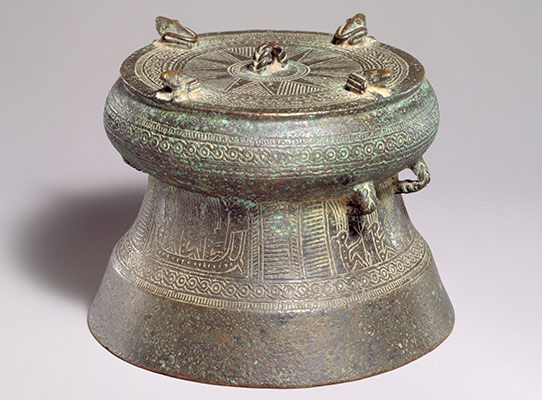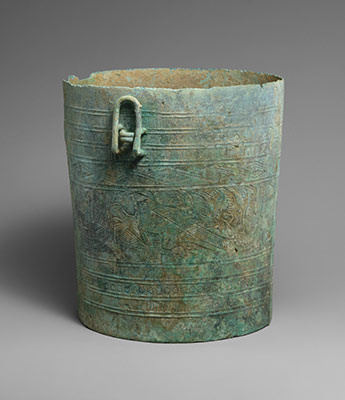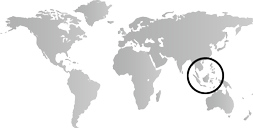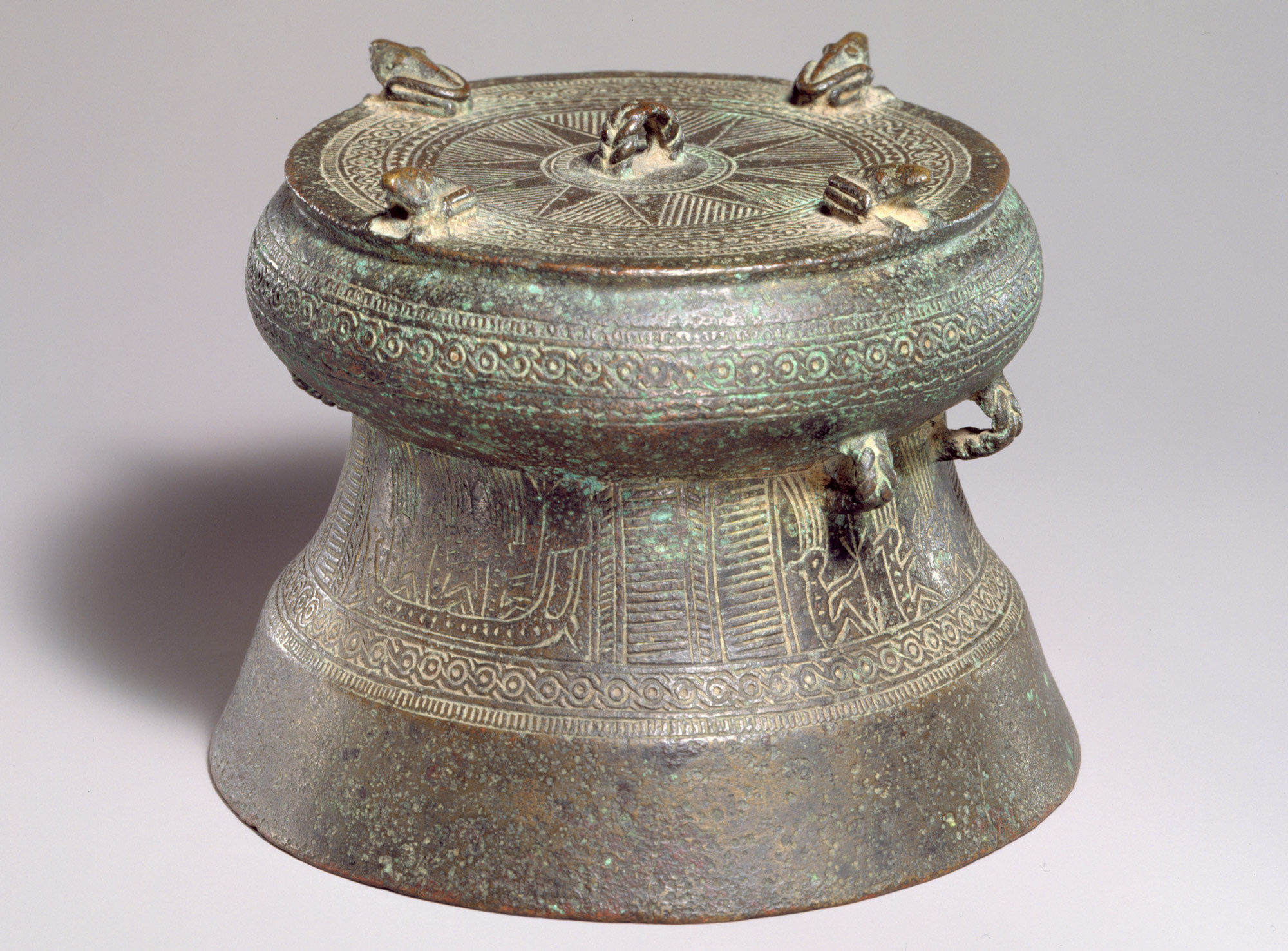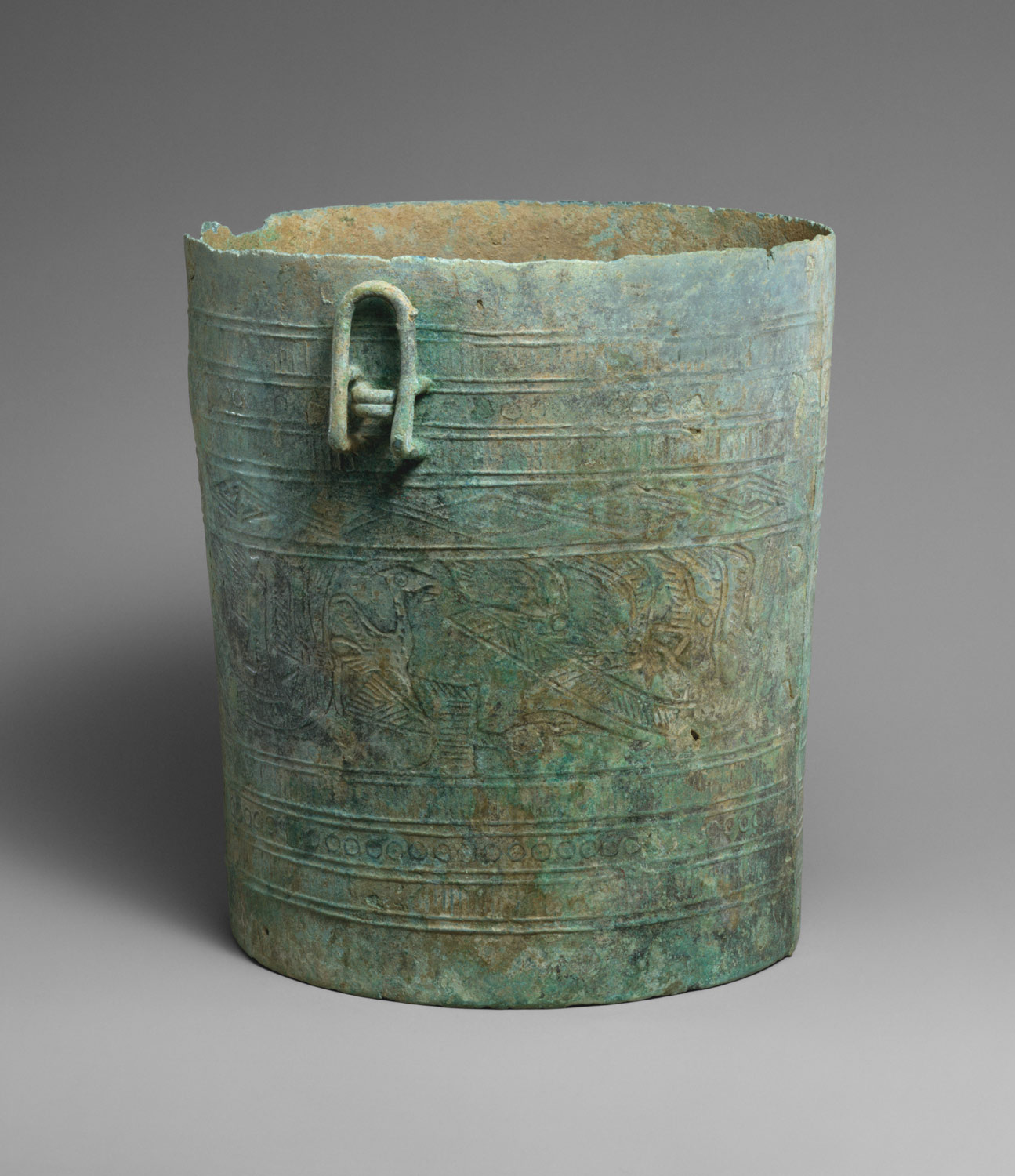Expanding international trade characterizes this period in Southeast Asia: Indonesian outriggers travel to the East African coast; Indian ceramics and glass beads are found in Bali and on the mainland; Chinese mirrors and Roman coins have been excavated in Cambodia; and horses from the Kushans in northwest India are imported. By the sixth century A.D., Indian influence on the mainland is significant—prosperous kingdoms in Thailand adopt Indian political, cosmological, and religious practices, and Sanskrit inscriptions are found in eastern Kalimantan and western Java.
Southeast Asia, 1–500 A.D.
Timeline
1 A.D.
125 A.D.
125 A.D.
250 A.D.
250 A.D.
375 A.D.
375 A.D.
500 A.D.
Overview
Key Events
-
ca. 500 B.C.–300 A.D.
The Dongson culture, named after a site on the coast south of present-day Hanoi, flourishes in northern Vietnam. Large drums with tympanums and sides decorated in low-relief figures and geometric designs are the most distinctive implements produced by the culture, which is also noted for its bronze vessels and ceremonial weapons. Examples of the drums, imported and made locally, have been found in South China and throughout mainland and island Southeast Asia. The earliest pieces, often termed Heger I after an early art-historical classification, have less stylized and more varied imagery than drums made later. Pejeng-type drums, distinguished by their elongated bodies and overlapping tympanums, are produced only in Indonesia.
-
ca. 500 B.C.–100 A.D.
Austronesian speakers from Borneo settle in southern Vietnam. The pottery styles and jar burials of the Sa Huynh culture show continuing ties to Borneo and the Philippines. Comparable practices are also illustrated by the burial pottery found on the “Plain of Jars” and related sites in Laos. Carnelian, agate, olivine, and zircon jewelry are found in the jar burials, as are blue and red glass beads, attesting to the importance of trade for these regions. The use of a distinctive type of double-headed earring, often termed ling-ling-o, also illustrates continuing links between southern Vietnam and island Southeast Asia.
-
ca. 1–100 A.D.
Indonesian outriggers trade with the east coast of Africa, according to the Roman historian Pliny (in his Natural History).
-
ca. 1–200 A.D.
Rouletted wares and other Indian ceramics similar to those found at Arikamedu, an Indo-Roman trading post near Pondicherry, are used in Sembiran in Bali. One shard has three characters in the Kharosthi script of northeast India scratched on its surface.
-
ca. 1–200 A.D.
Numerous glass beads of Indian manufacture found throughout the mainland attest to the growing trade between India and Southeast Asia. The mainland played a role in international trade as early as the fourth century B.C., when ships in the Bay of Bengal stopped at the Isthmus of Kra from which their goods were portaged to the Gulf of Thailand, thereby avoiding the lengthy and arduous voyage around the Malay Peninsula. Ties with India are strengthened during the second to the fourth century A.D., and by the sixth century A.D., prosperous city-states or kingdoms flourish, adopting Indian political, cosmological, and religious thought.
-
ca. 40-43 A.D.
Chinese control of Vietnam is briefly challenged by a rebellion led by Trung Trac and her sister Trung Nhi, who rule as queens of an independent kingdom before their defeat by the Chinese general Ma Yuan (14 B.C.–49 A.D.).
-
ca. 50–500 A.D.
The kingdom of Funan in Cambodia and southern Vietnam serves as a meeting point for traders from China, Southeast Asia, India, and the West. Funan is thought to be a Chinese transcription of the term bnam, which later evolves into the Khmer phnom (mountain). Chinese sources, derived from the writings of two third-century A.D. envoys from the southern state of Wu, indicate that Funan benefited from an agricultural productivity that allowed it to house and feed foreign sailors from many lands forced to wait up to five months for the monsoon winds to shift. The capital at Vyadhapura near Ba Phnom in Cambodia had palaces, houses, a type of script, and repositories for books and other treasures. Excavations of the coastal site of Oc Eo, linked to the interior by canals, have revealed a rectangular city measuring 1.9 by 1 mile. Chinese mirrors, Roman coins, and early wooden sculptures have been found at this site.
-
ca. 100–500 A.D.
The most striking complex of prehistoric large stone monuments in Indonesia (others are found on the mainland and in Taiwan) lies around Pageralam in Sumatra. Large underground slab-lined burials—some with polychrome paintings of human figures and buffalo—and carved stone boulders have been found in some number. Dating for the complex is based on the images of men carrying Dongson-type drums depicted on the reliefs at Airpurah and Batugajah.
-
ca. 200–400 A.D.
Chinese texts, also based on the early envoys to Funan, contain intriguing references to Zhiayang (or Keying) and Sitiao, possibly areas in Sumatra or Java that entered international trade with the development of a route through the Strait of Malacca in the third and fourth centuries A.D. Sitiao is described as a place with cities and paved roads, and mention is made of a ruler in Zhiayang who imported horses from the Kushans in northwest India.
-
ca. 400–500 A.D.
Sanskrit inscriptions attributed to the fifth and sixth centuries A.D. found in eastern Kalimantan and western Java further attest to the spread of Indian influence in Southeast Asia.
Citation
“Southeast Asia, 1–500 A.D.” In Heilbrunn Timeline of Art History. New York: The Metropolitan Museum of Art, 2000–. http://www.metmuseum.org/toah/ht/?period=05®ion=sse (October 2000)
